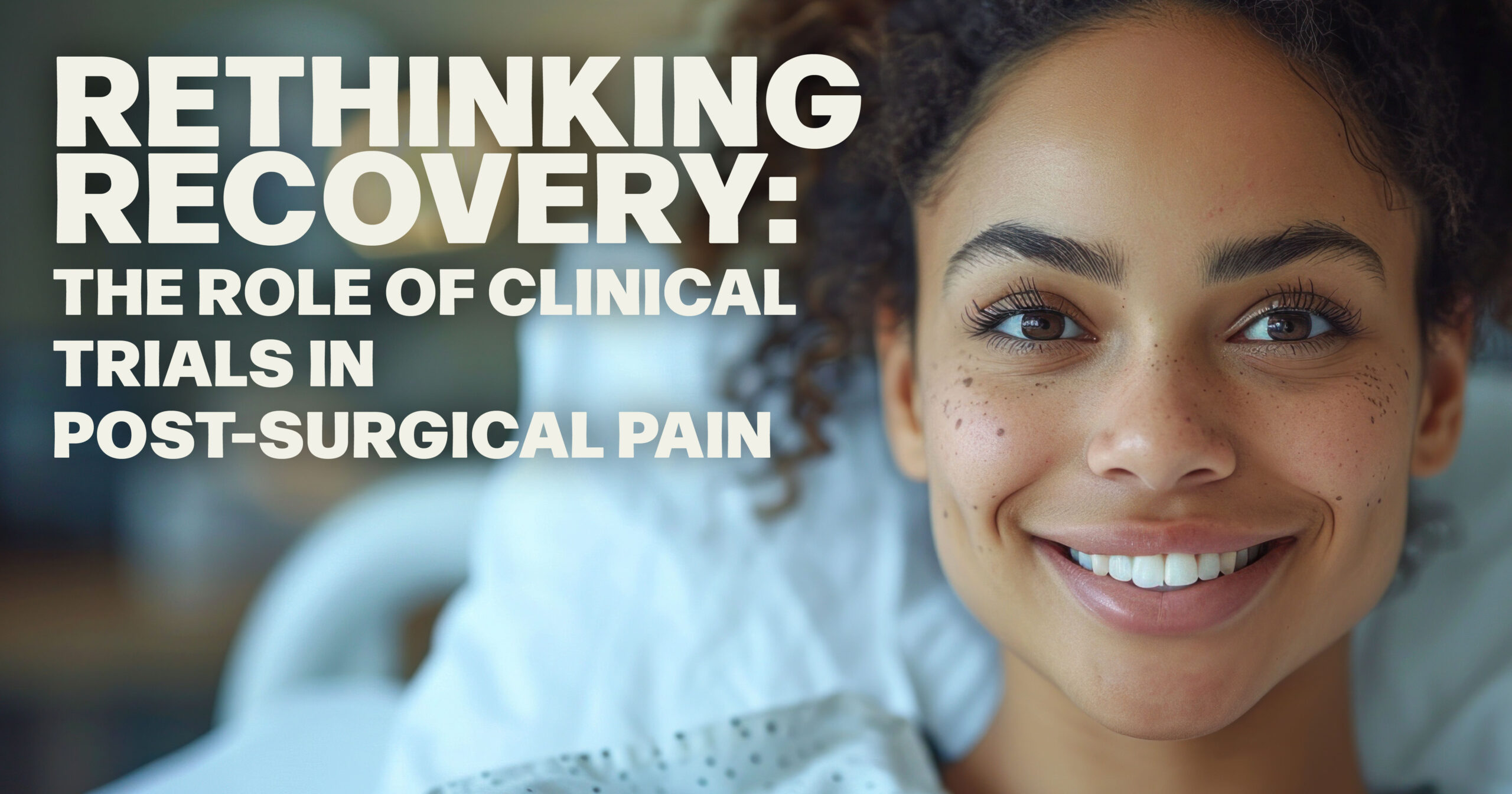Repensando la recuperación: el papel de los ensayos clínicos en el dolor posquirúrgico
El dolor es una parte natural de la recuperación quirúrgica, pero la forma en que lo manejamos puede tener efectos duraderos en la salud y el bienestar. Tradicionalmente, los opioides han sido la solución preferida para el dolor posquirúrgico, pero la creciente preocupación por la dependencia, los efectos secundarios y la actual crisis de opioides está impulsando un cambio crucial: formas más seguras e inteligentes de sanar.
Un nuevo enfoque para el manejo del dolor
Hoy en día, investigadores y médicos están replanteando cómo tratamos el dolor posoperatorio. Las opciones de alivio del dolor sin opioides, como los bloqueos nerviosos, los anestésicos locales de acción prolongada, los antiinflamatorios no esteroideos (AINE) e incluso terapias no farmacológicas como la crioterapia o la acupuntura, están ganando terreno como alternativas eficaces.
Estos nuevos enfoques pretenden:
- Controlar el dolor de forma eficaz
- Reducir o eliminar la necesidad de opioides
- Mejorar las experiencias generales de recuperación
- Reducir el riesgo de uso de medicamentos a largo plazo
Los ensayos clínicos marcan el camino
Los ensayos clínicos son esenciales para identificar qué estrategias de manejo del dolor funcionan mejor y para quién. Los estudios en curso están probando:
- Nuevas formulaciones de medicamentos no opioides
- Planes de alivio del dolor multimodal que combinan diferentes tipos de terapias
- Intervenciones impulsadas por la tecnología, como dispositivos portátiles o herramientas de seguimiento digital
- Protocolos de recuperación específicos para cada paciente según el tipo de cirugía, la edad y el historial de salud.
Estos ensayos están ayudando a construir un futuro donde los pacientes puedan recuperarse de forma segura, cómoda y sin riesgos innecesarios.

Por qué esto es importante para la salud a largo plazo
Un control deficiente del dolor puede retrasar la recuperación, pero la dependencia excesiva de opioides puede tener consecuencias no deseadas, como la adicción. Las investigaciones demuestran que incluso el consumo de opioides a corto plazo después de una cirugía puede aumentar el riesgo de dependencia a largo plazo. Al participar en ensayos clínicos, pacientes y profesionales sanitarios pueden contribuir a la transformación del estándar de atención hacia opciones de recuperación más seguras y sostenibles.
Reflexiones finales
La forma en que manejamos el dolor posquirúrgico está cambiando, y los ensayos clínicos son fundamentales para esa transformación. Con cada estudio, nos acercamos a estrategias de recuperación más seguras y efectivas que protegen la salud de los pacientes ahora y en el futuro.


